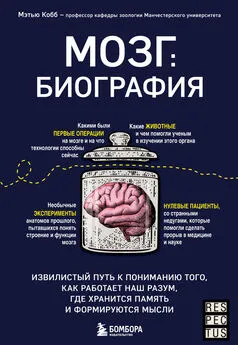Барбара Тверски - Ум в движении [Как действие формирует мысль] [litres]
- Название:Ум в движении [Как действие формирует мысль] [litres]
- Автор:
- Жанр:
- Издательство:Литагент Альпина
- Год:2020
- Город:Москва
- ISBN:978-5-0013-9354-2
- Рейтинг:
- Избранное:Добавить в избранное
-
Отзывы:
-
Ваша оценка:
Барбара Тверски - Ум в движении [Как действие формирует мысль] [litres] краткое содержание
Книга известного когнитивного психолога Барбары Тверски посвящена пространственному мышлению. Это мышление включает в себя конструирование «в голове» и работу с образами в отношении не только физического пространства, но и других его видов – пространств социального взаимодействия и коммуникации, жестов, речи, рисунков, схем и карт, абстрактных построений и бесконечного поля креативности. Ключевая идея книги как раз и состоит в том, что пространственное мышление является базовым, оно лежит в основе всех сфер нашей деятельности и всех ситуаций, в которые мы вовлекаемся.
Доступное и насыщенное юмором изложение серьезного, для многих абсолютно нового материала, а также прекрасные иллюстрации привлекут внимание самых взыскательных читателей. Они найдут в книге как увлекательную конкретную информацию о работе и развитии пространственного мышления, так и важные обобщения высокого уровня, воплощенные в девять законов когниции.
Ум в движении [Как действие формирует мысль] [litres] - читать онлайн бесплатно ознакомительный отрывок
Интервал:
Закладка:
Cantlon, J. F., Platt, M. L., & Brannon, E. M. (2009). Beyond the number domain. Trends in Cognitive Sciences , 13(2), 83–91.
Бо́льшая чувствительность к меньшим значениям в языке
Talmy, L. (1983). How language structures space. In Spatial orientation (pp. 225–282). Boston, MA: Springer.
Анализ числовой информации в культурах, не имеющих названий для чисел больше трех
Frank, M. C., Everett, D. L., Fedorenko, E., & Gibson, E. (2008). Number as a cognitive technology: Evidence from Pirahã language and cognition. Cognition , 108(3), 819–824.
Gordon, P. (2004). Numerical cognition without words: Evidence from Amazonia. Science , 306(5695), 496–499.
Pica, P., Lemer, C., Izard, V., & Dehaene, S. (2004). Exact and approximate arithmetic in an Amazonian indigene group. Science , 306(5695), 499–503.
Повреждение головного мозга может избирательно разрушать систему приблизительных количеств и систему точных чисел
Dehaene, S. (2011). The number sense: How the mind creates mathematics . New York, NY: Oxford University Press.
Lemer, C., Dehaene, S., Spelke, E., & Cohen, L. (2003). Approximate quantities and exact number words: Dissociable systems. Neuropsychologia , 41(14), 1942–1958.
Системы приблизительных количеств и точных чисел взаимодействуют в неповрежденном мозге
Gallistel, C. R., & Gelman, R. (1992). Preverbal and verbal counting and computation. Cognition , 44, 43–74.
Holloway, I. D., & Ansari, D. (2009). Mapping numerical magnitudes onto symbols: The numerical distance effect and individual differences in children’s mathematics achievement. Journal of Experimental Child Psychology , 103(1), 17–29.
Lonnemann, J., Linkersdörfer, J., Hasselhorn, M., & Lindberg, S. (2011). Symbolic and non-symbolic distance effects in children and their connection with arithmetic skills. Journal of Neurolinguistics , 24(5), 583–591.
Mazzocco, M. M., Feigenson, L., & Halberda, J. (2011). Preschoolers’ precision of the approximate number system predicts later school mathematics performance. PLoS One , 6(9), e23749.
Изучение системы приблизительных количеств помогает изучению системы точных чисел
Libertus, M. E., Feigenson, L., & Halberda, J. (2013). Is approximate number precision a stable predictor of math ability? Learning and Individual Differences , 25, 126–133.
Lyons, I. M., & Beilock, S. L. (2011). Numerical ordering ability mediates the relation between number-sense and arithmetic competence. Cognition , 121(2), 256–261.
Park, J., Bermudez, V., Roberts, R. C., & Brannon, E. M. (2016). Non-symbolic approximate arithmetic training improves math performance in preschoolers. Journal of Experimental Child Psychology , 152, 278–293.
Wang, J. J., Odic, D., Halberda, J., & Feigenson, L. (2016). Changing the precision of preschoolers’ approximate number system representations changes their symbolic math performance. Journal of Experimental Child Psychology , 147, 82–99.
История записи чисел
Aczel, A. D. (2016). Finding zero . New York, NY: St. Martin’s Griffin.
Cajori, F. (1928). A history of mathematical notations. Vol. I, Notations in elementary mathematics . North Chelmsford, MA: Courier Corporation.
Cajori, F. (1928). A history of mathematical notations. Vol. II, Notations mainly in higher mathematics . Chicago, IL: Open Court Publishing.
Ifrah, G. (2000). The universal history of numbers: From prehistory to the invention of the computer . Translated by D. Vellos, E. F. Harding, S. Wood, & I. Monk. Toronto, Canada: Wiley.
Mazur, J. (2014). Enlightening symbols: A short history of mathematical notation and its hidden powers . Princeton, NJ: Princeton University Press.
Запись чисел и письменность Запада начались с бухгалтерского учета
Schmandt-Besserat, D. (1992). Before writing, Vol. I: From counting to cuneiform . Austin: University of Texas Press.
Пространство имеет решающее значение для системы математических обозначений
Dehaene, S. (2011). The number sense: How the mind creates mathematics . New York, NY: Oxford University Press.
Gelman, R., & Gallistel, C. R. (1978). The child’s understanding of number . Cambridge, MA: Harvard University Press.
Lakoff, G., & Núñez, R. (2000). Where mathematics comes from: How the embodied mind brings mathematics into being . New York, NY: Basic Books.
Движения глаз указывают на отсутствующие места
Kahneman, D. (1973). Attention and effort . Englewood Cliffs, NJ: Prentice Hall.
Воображаемая дистанция влияет на время чтения
Bar-Anan, Y., Liberman, N., Trope, Y., & Algom, D. (2007). Automatic processing of psychological distance: Evidence from a Stroop task. Journal of Experimental Psychology: General , 136(4), 610.
Воображаемая дистанция влияет на оценку личности
Liberman, N., Trope, Y., & Stephan, E. (2007). Psychological distance. In A. W. Kruglanski & E. T. Higgins (Eds.), Social psychology: Handbook of basic principles (2nd ed., pp. 353–383). New York, NY: Guilford Press.
Ross, L. (1977). The intuitive psychologist and his shortcomings: Distortions in the attribution process. In L. Berkowitz (Ed.), Advances in experimental social psychology (Vol. 10, pp. 173–220). New York, NY: Academic Press.
Trope, Y., & Liberman, N. (2010). Construal-level theory of psychological distance. Psychological Review , 117(2), 440.
Бо́льшая дистанция способствует более абстрактному языку и мышлению
Förster, J., Friedman, R. S., & Liberman, N. (2004). Temporal construal effects on abstract and concrete thinking: consequences for insight and creative cognition. Journal of Personality and Social Psychology , 87(2), 177.
Jia, L., Hirt, E. R., & Karpen, S. C. (2009). Lessons from a faraway land: The effect of spatial distance on creative cognition. Journal of Experimental Social Psychology , 45(5), 1127–1131.
Liberman, N., Polack, O., Hameiri, B., & Blumenfeld, M. (2012). Priming of spatial distance enhances children’s creative performance. Journal of Experimental Child Psychology , 111(4), 663–670.
Semin, G. R., & Smith, E. R. (1999). Revisiting the past and back to the future: Memory systems and the linguistic representation of social events. Journal of Personality and Social Psychology , 76(6), 877.
Когнитивные ориентиры расширяют ближние дистанции и сжимают дальние
Holyoak, K. J., & Mah, W. A. (1982). Cognitive reference points in judgements of symbolic magnitude. Cognitive Psychology , 14, 328–352.
Социальная перспектива: изнутри или сверху
Keltner, D., Gruenfeld, D. H., & Anderson, C. (2003). Power, approach, and inhibition. Psychological Review , 110(2), 265.
Keltner, D., Van Kleef, G. A., Chen, S., & Kraus, M. W. (2008). A reciprocal influence model of social power: Emerging principles and lines of inquiry. Advances in Experimental Social Psychology , 40, 151–192.
Van Kleef, G. A., Oveis, C., Van Der Löwe, I., Luo Kogan, A., Goetz, J., & Keltner, D. (2008). Power, distress, and compassion: Turning a blind eye to the suffering of others. Psychological Science , 19(12), 1315–1322.
Язык указывает на восприятие
Arnheim, R. (1974). Art and visual perception . Berkeley: University of California Press.
Как слепой ребенок говорит о пространстве
Landau, B., Gleitman, L. R., & Landau, B. (2009). Language and experience: Evidence from the blind child (Vol. 8). Cambridge, MA: Harvard University Press.
Landau, B., Spelke, E., & Gleitman, H. (1984). Spatial knowledge in a young blind child. Cognition , 16(3), 225–260.
Утверждение является минимальной единицей мысли
Anderson, J. R. (2013). The architecture of cognition . New York, NY: Psychology Press.
Pylyshyn, Z. W. (1973). What the mind’s eye tells the mind’s brain: A critique of mental imagery. Psychological Bulletin , 80(1), 1.
Пространственное мышление как основа языка
Fauconnier, G. (1994). Mental spaces: Aspects of meaning construction in natural language . Cambridge, England: Cambridge University Press.
Fauconnier, G., & Sweetser, E. (Eds.). (1996). Spaces, worlds, and grammar. Chicago, IL: University of Chicago Press.
Lakoff, G., & Johnson, M. (2008). Metaphors we live by . Chicago, IL: University of Chicago Press.
Talmy, L. (1983). How language structures space. In H. L. Pick & L. P. Acredolo (Eds.), Spatial orientation (pp. 225–282). Boston, MA: Springer.
Перефразированная цитата Пессоа
Art proves that life is not enough. (n. d.). AZ Quotes. Взято с сайта https://www.azquotes.com/author/11564-Fernando_Pessoa?p=3.
Неандертальские пещерные росписи в Испании
Hoffmann, D. L., Standish, C. D., García-Diez, M., Pettitt, P. B., Milton, J. A., Zilhão, J., … Lorblanchet, M. (2018). U-Th dating of carbonate crusts reveals Neanderthal origin of Iberian cave art. Science , 359(6378), 912–915.
Принципы когнитивного дизайна
На основе: Tversky, B., Morrison, J. B., & Betrancourt, M. (2002). Animation: Can it facilitate? International Journal of Human-Computer Studies , 57(4), 247–262.
См. также: Norman, D. (2013). The design of everyday things: Revised and expanded edition . New York, NY: Basic Books.
История письменности
Gelb, I. J. (1952). A study of writing . Chicago, IL: University of Chicago Press.
Древнейшая (на сегодня) карта
Utrilla, P., Mazo, C., Sopena, M. C., Martínez-Bea, M., & Domingo, R. (2009). A Paleolithic map from 13,660 calBP: Engraved stone blocks from the Late Magdalenian in Abauntz Cave (Navarra, Spain). Journal of Human Evolution , 57(2), 99–111.
История календарей
Boorstin, D. J. (1985). The discoverers: A history of man’s search to know world and himself . New York, NY: Vintage.
Читать дальшеИнтервал:
Закладка:
![Обложка книги Барбара Тверски - Ум в движении [Как действие формирует мысль] [litres]](/books/1063976/barbara-tverski-um-v-dvizhenii-kak-dejstvie-formir.webp)
![Барбара Морриган - Сердце, что растопит океан [litres]](/books/1059584/barbara-morrigan-serdce-chto-rastopit-okean-litre.webp)
![Рольф Добелли - Искусство ясно мыслить [litres]](/books/1067492/rolf-dobelli-iskusstvo-yasno-myslit-litres.webp)
![Александр Кондрашов - Жизнь в движении [litres]](/books/1074016/aleksandr-kondrashov-zhizn-v-dvizhenii-litres.webp)
![Мартин Рис - Всего шесть чисел. Главные силы, формирующие Вселенную [litres]](/books/1082236/martin-ris-vsego-shest-chisel-glavnye-sily-formir.webp)
![Джон Гревилл Агард Покок - Момент Макиавелли: Политическая мысль Флоренции и атлантическая республиканская традиция [litres]](/books/1143945/dzhon-grevill-agard-pokok-moment-makiavelli-politi.webp)
![Кира Бег - Король моих мыслей [litres самиздат]](/books/1148970/kira-beg-korol-moih-myslej-litres-samizdat.webp)
![Ива Коде - Мы мыслим… [litres самиздат]](/books/1149538/iva-kode-my-myslim-litres-samizdat.webp)


